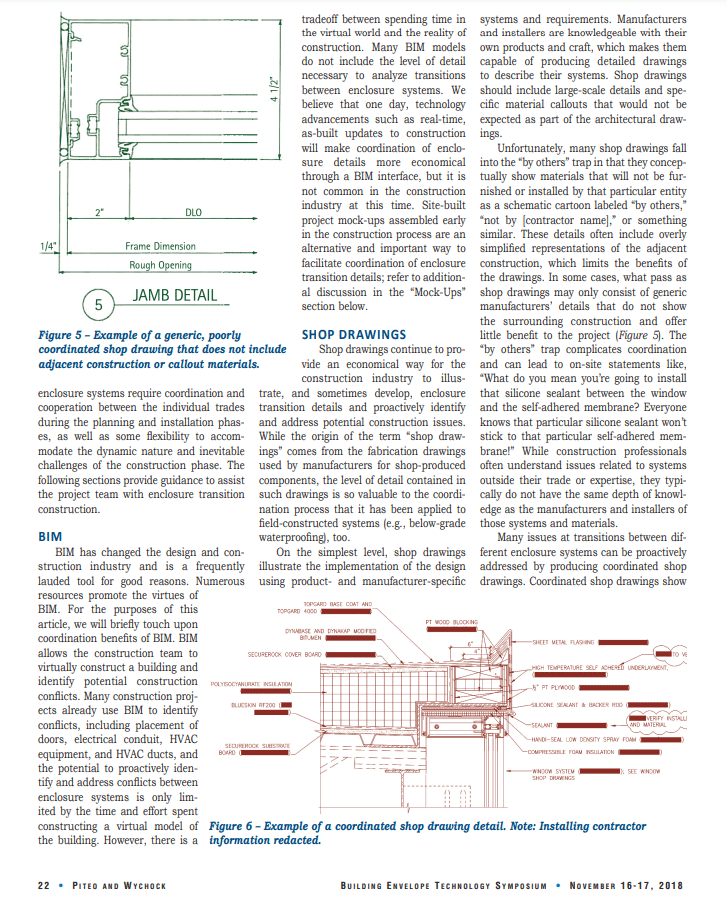“By Others”: Transitions Between Enclosure Systems
Article Summary – Link to Full Article is Below
In this article, Nicholas A. Piteo and Emily V. Wychock — Professional Engineers with Simpson Gumpertz & Heger — discuss building enclosure continuity and how to design and construct coordinated transition details. They share insights into material selection/compatibility, constructability, coordination among trades, and addressing inevitable challenges. This article is a must-read for aspiring design professionals: mastering the design of transition details is critical because most building enclosure problems (air leakage, water infiltration, moisture issues, etc.) occur at transitions.
The first part of the article is all about design, and the first concept discussed is continuity, a key tenet of building enclosure engineering. The article includes strategies to ensure water, thermal, air, and vapor control layers are continuous around a building. The next topic is clarity. The authors emphasize the importance of using larger-scale drawings to clearly depict the relationship between components. Another suggestion is to use three-dimensional details at irregular or complex transitions. The third concept introduced is material properties/compatibility. They provide crucial examples of materials that are incompatible and strategies to solve compatibility issues, such as using a separation material. Other important design topics covered include differential movement, long-term performance and durability, and constructability.
The second section covers the construction phase. Here, the authors show how to draw shop drawings so that they correctly indicate adjacent construction and call-out materials. They explain how many shop drawings fall into the “by others” trap, which complicates coordination at the worksite. The trap involves drawings that conceptually show materials that will not be furnished or installed by that particular entity as a schematic cartoon labeled “by others”. The solution is to create coordinated shop drawings, and this article shows you how to do just that.
Click here to read the full article.
Article Preview



